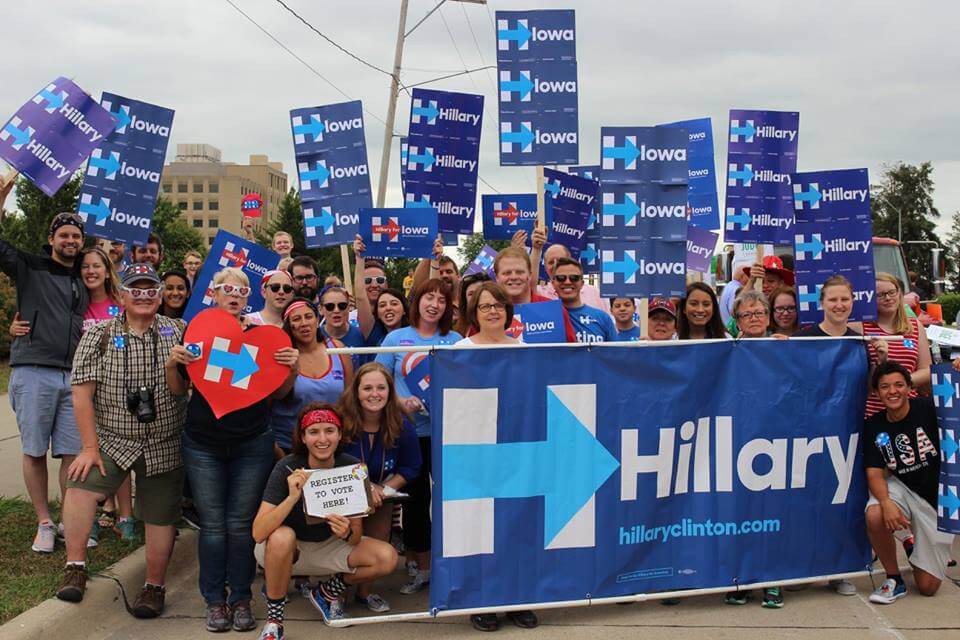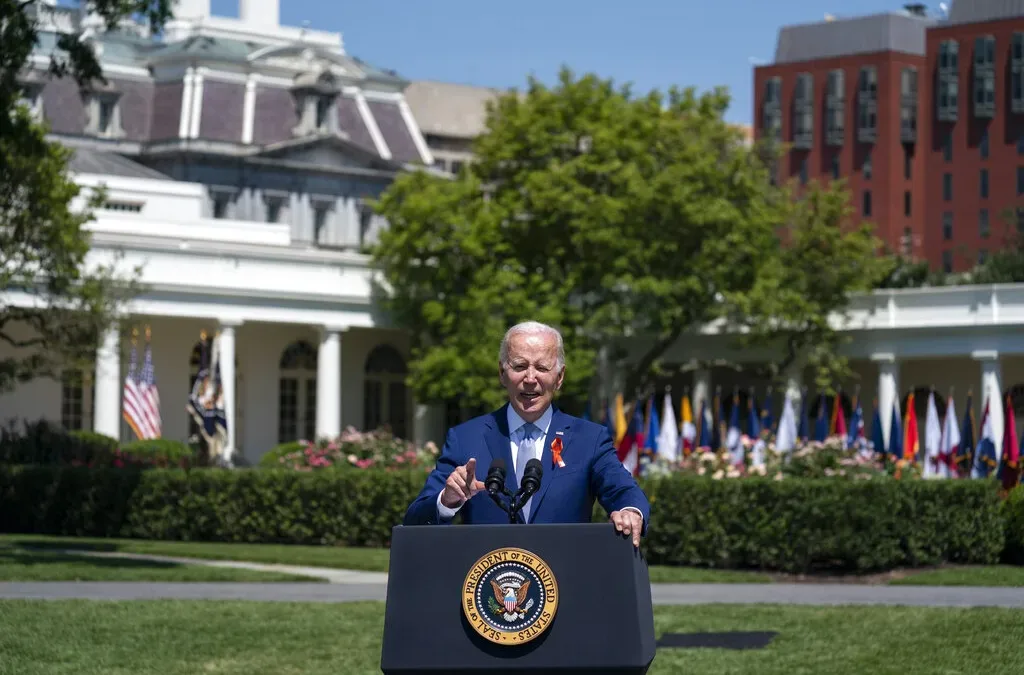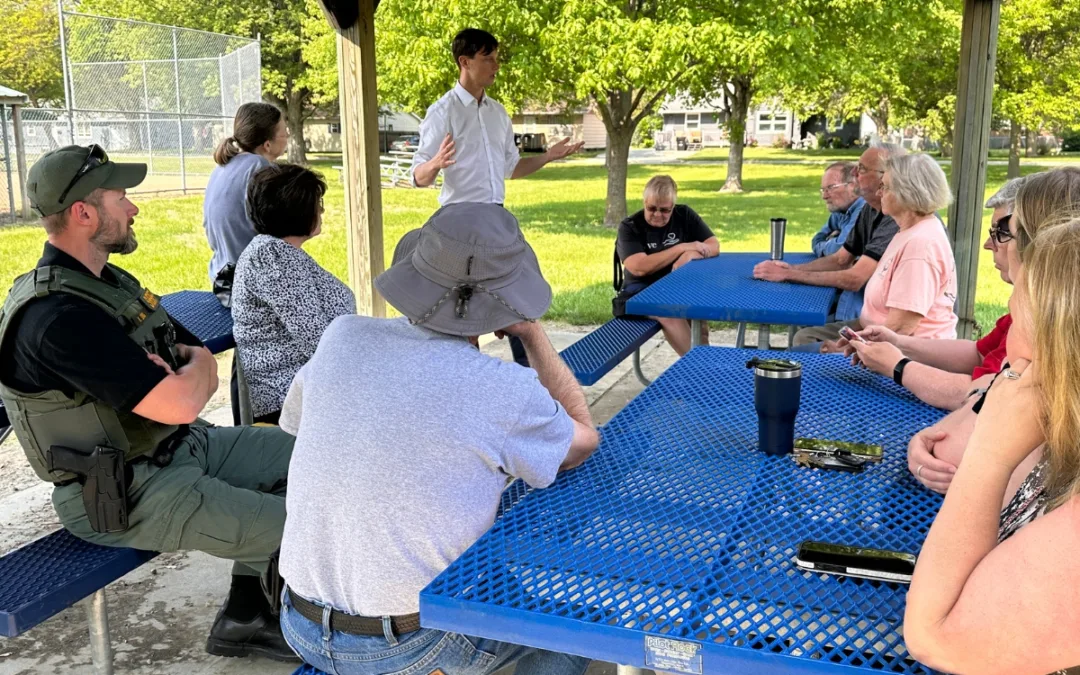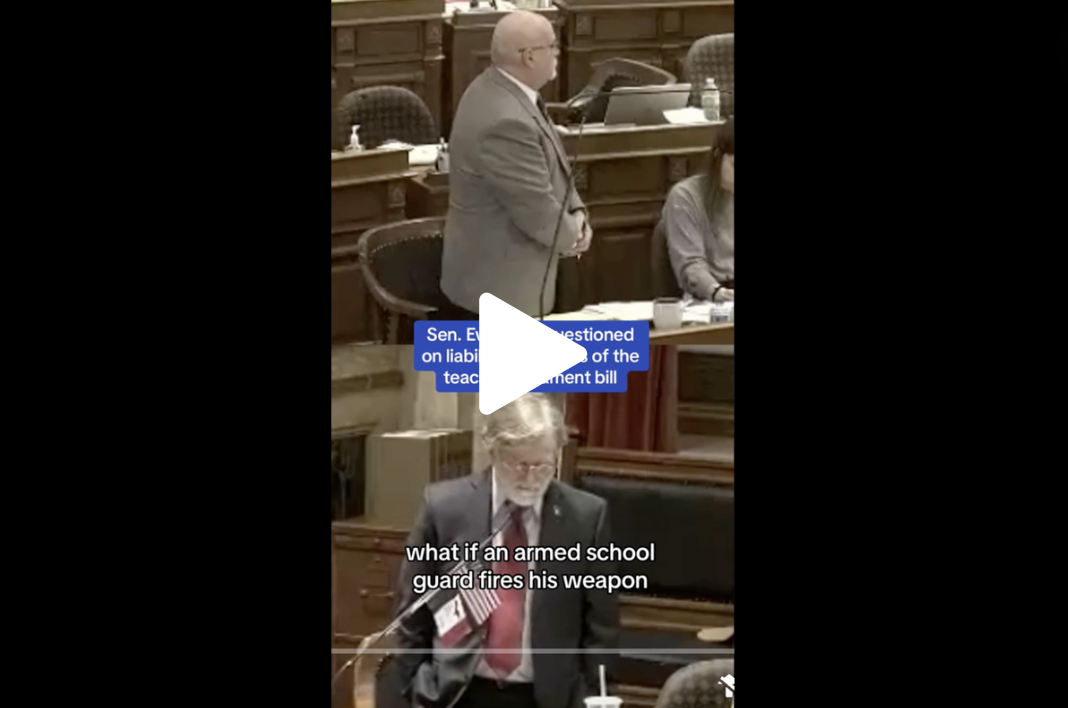
While the media’s spotlight will be solely fixed upon the Republicans and Democrats’ conventions this week and next, the behind-the-scenes campaign efforts go forward on the ground in Iowa. And like in many other swing states key to winning the presidency, Hillary Clinton and the Democrats have built a huge operation here to turn out voters.
Clinton’s campaign sent a small handful of key operatives from her Iowa Caucus operation back to the state starting in April. Kane Miller, Clinton’s Regional Field Director for Polk County during the caucus, worked behind the scenes until being named the Clinton state director for the general election. Troy Price remained in the state after the caucus to handle the delegates in the caucus-to-convention process. Meanwhile, the party slowly built out its coordinated campaign, the overarching operation run by the Iowa Democratic Party to support the ticket in a unified effort.
Now they’re full steam ahead, sending out canvassers every day, organizing large phone banks and building local volunteer networks. But is it any larger than in past years? And how does it compare to the Republicans?
The Democrats’ Organization
Starting Line is able to count 42 paid staff in Iowa Democrats’ field operation, including headquarters leaders and regional and field organizers, with the possibility of the total being as high 60. They also appear to have between two and three dozen summer fellows, essentially paid interns that do a significant amount of voter contact and serious organizing work. In addition, they have several staffers in a full digital team, a data team and a voter protection director.
There’s also a matter of quality of staff – many of the regional field directors worked in multiple states for Clinton during the primaries. It’s a much better experienced group than you typically have, and one that is well-trained in how to advocate for Clinton.
At least a dozen offices are already open around the state, some since early May. The party fanned out over the 4th of July holiday, hitting up 29 parades and festivals.
What a @HillaryforIA team here in West DSM ready to #ioWIN!! Happy 4th! pic.twitter.com/axnsFNbt0c
— Chris Walloch (@ChrisWalloch) July 4, 2016
“Supporters and volunteers are the heart of this grassroots campaign,” said Hillary for Iowa State Director Kane Miller. “Our staff is working from river to river to recruit volunteers, connect with supporters, and build the personal relationships that are the backbone of any successful campaign.”
It’s all a sizable investment and indicative of Iowa’s role this year in the presidential campaigns’ national strategies. However, it may still be a slightly smaller presence than in past presidential cycles. The Obama campaign went all-out in Iowa in 2008 and 2012 with massive staffs. They had around 90 field organizers in Iowa by August 2008 and 400 paid staff in total by the end of 2012.
So while Iowa is still very much a key target for Clinton’s campaign, the really huge operations in Ohio and Pennsylvania this year may point to a bigger focus on those states. The field operation is officially paid for through the Iowa Democratic Party, but the Clinton campaign helps direct extra resources where it needs it. Neither Clinton nor Trump have returned to Iowa since the caucus.
It's a good day where there are too many people in the Sioux City office to fit them all in 1 photo! #ioWIN #IADems pic.twitter.com/jdv3SzrUld
— Brexton Isaacs (@BrextonIsaacs) July 13, 2016
The Republicans’ Organization
On the Republican side, Iowa is seen as an important Midwest pick-up opportunity for Trump. However, with Trump’s national campaign lacking a lot of basic infrastructure, the RNC is taking the lead in organizing on the ground. The national party has had longterm staff and resources in Iowa since 2013, working on building up grassroots networks.
“RNC has had staff on the ground since 2013, so we’ve literally been here for years building a state-of-the-art, data-driven campaign focusing on grassroots, communications and data,” said Lindsay Jancek, the RNC’s spokesperson in Iowa. “The RNC has continued to maintain a presence in Iowa because we understand how important Iowa is to winning in November … Whereas Democrats will work during primaries and caucuses and pack up after elections, and come back in again and start all over.”
Starting Line is able to count 14 paid staffers in traditional field roles for the Iowa Republicans, along with a number of other support staff at their headquarters. The Trump campaign only has Eric Branstad and Tana Goertz from Iowa on its payroll working here, along with Sam Clovis still serving as a national policy adviser. Nearly all of Trump’s Iowa Caucus staff did not continue on with the campaign.
https://twitter.com/KrenzelokJoe/status/751859634907086848
Despite the smaller staff presence, the RNC feels good about their ground operation in Iowa and sees the Democrats as the ones playing catch-up. Comparing staff sizes, they argue, is comparing apples to oranges, considering the different organizing focus they take. In addition to their paid operation, the Republicans have 80 neighborhood leaders and core team members in Iowa – part of their local volunteer networks where activists take on large roles and command teams of supporters. Many of those leaders were around and active before the official organizing began this year.
Republicans think that’s given them a more local approach to their voter outreach efforts, as opposed to the many out-of-state staff that the Democrats bring in. The lack of official Trump campaign presence isn’t seen as a hinderance, either.
“Once you get a nominee, it doesn’t really make sense to reinvent the wheel and have duplicative efforts running both grassroots on the committee side and the nominee side,” Jancek said. “Since we’ve been working for four years on grassroots, data and the political operation, it doesn’t make sense to start that up again.”
Great crowd of volunteers for our Eastern Iowa RLI Class today! #TeamIowa #LeadRight2016 #ImWithYou pic.twitter.com/tJzv8CQuCJ
— Michael Sullivan (@Sully21) June 25, 2016
And the smaller staff investment isn’t any different than other years for the GOP, including in 2010 and 2014 when they romped to victory. Republicans in Iowa rely much more on a paid program of absentee ballot mailers to turn out their voters. Governor Branstad turned the party toward a bigger focus on early voting in 2010, and rank-and-file voters have now had three cycles of multiple absentee mailers arriving in their mailboxes. Their voters are also typically easier to get to vote.
Except this year might be a little trickier on that front. With Trump losing ground among higher-educated voters, and several polls showing him doing better among “registered voters” than “likely voters,” the turnout model may flip on its head this year. It might be Republicans who need to motivate sporadic voters to actually show up for their candidate. That means staff and volunteers have to identify potential Democrats and independents who are switching to Trump, go sign them up for absentee ballots and then pester them until they turn the ballots back in.
They may also lack heavily active support from the evangelical community, which is still wary of Trump. Evangelicals will likely still vote for Trump, but their vast network of grassroots activists may not fill Republican field offices like they have in years’ past.
Who has a selfie stick and is ready to dominate the National Day of Training? #TeamIowa, that's who! #LeadRight2016 pic.twitter.com/THxbA31uy4
— Michael Sullivan (@Sully21) June 7, 2016
Democrats’ Outreach And Creative Tactics
The biggest question for Iowa Democrats’ prospects in November is whether the new Sanders volunteers and voters will stick with the party. Aside from some very vocal holdouts, it seems most of them will, though many may focus more on down-ballot races than Clinton’s candidacy. Still, the long primary delayed the official start of the efforts for Clinton in Iowa.
“The primary did last longer than eight years ago, so people were still fired up about their candidate,” said Tova Yampolsky, the coordinated campaign’s regional field director for Polk County.
But the campaign says most of their outreach to the Sanders supporters have gone well.
“It’s been positive overall,” Yampolsky said. “On the local level we’ve seen a lot of support from Bernie folks who recognize that this year it’s important to come together, and ultimately we are stronger together. We’ve done a lot of outreach to those folks, especially the Bernie delegates to the state convention and the national delegates. And quite a number of them are excited to do joint events to brainstorm ways to bring those folks who may be more reluctant to come in and support the whole Democratic ticket.”
Our fellow, Mike, came back swimming in ABR forms! #HillYes #IoWIN #IAdems #WinEveryDay pic.twitter.com/vMeOI0rN3L
— Sylvia Yacoub (@yacoub_sylvia) July 10, 2016
Yampolsky is one of the staffers who has been on the trail a long time. Originally from Virginia, she started out working for Clinton in New Hampshire and traveled afterward to Nebraska, West Virginia and Pennsylvania before ending up in Iowa. Throughout those many contests, the Clinton campaign tried out new digital and organizing strategies.
“The digital team – I think this was a change not from 2012, but certainly 2008. Organizers today aren’t called field organizers, we’re organizers. We do a lot of digital outreach, we have some great digital tools that have come out from our digital department,” she explained.
One useful method is a new Chrome extension that’s layered on top of VAN, the Democrats’ voter database system. When a supporter goes to Clinton’s website to sign up for an event, their data automatically populates in the VAN’s volunteer management section. The staffers can also easily send out blast emails to their region.
“It makes life a lot easier for organizers, but it also allows us to reach people in new ways online and meet people where they’re at,” Yampolsky said. “We’re activating our online supporters to become offline supporters and actually come into our field offices.”
https://twitter.com/tovayampolsky/status/750828241414287360
All of their staff is also very active on social media, with some of the digital staff dedicated solely to this online outreach. Some of the Twitter and Facebook usage is to organize volunteers and supporters, but a large part of it is to simply amplify their message. In an era where young people don’t watch network TV, some of the responsibility of getting out the campaign’s message has turned to field staff. Often you’ll see most of their staff tweeting out a flashy campaign graphic of the day, a new Clinton policy proposal or a video attacking Trump.
If the election is as close in Iowa as many believe it will be, the Clinton campaign and the Iowa Democratic Party hopes it’s all the little details like those, along with the traditional absentee ballot effort, that puts Clinton and others over the top.
“Elections are won on the margins, especially in swing states,” said Yampolskyz “As we’ve seen in poll after poll, Iowa is one of the few true toss-up states in this election. So field is going to make a huge difference.”
by Pat Rynard
Posted 7/19/16
Politics

Trump says he’s pro-worker. His record says otherwise.
During his time on the campaign trail, Donald Trump has sought to refashion his record and image as being a pro-worker candidate—one that wants to...

Biden announces new action to address gun sale loopholes
The Biden administration on Thursday announced new action to crack down on the sale of firearms without background checks and prevent the illegal...
Local News

No more Kum & Go? New owner Maverik of Utah retiring famous brand
Will Kum & Go have come and gone by next year? One new report claims that's the plan by the store's new owners. The Iowa-based convenience store...

Here’s a recap of the biggest headlines Iowa celebs made In 2023
For these famous Iowans, 2023 was a year of controversy, career highlights, and full-circle moments. Here’s how 2023 went for the following Iowans:...





